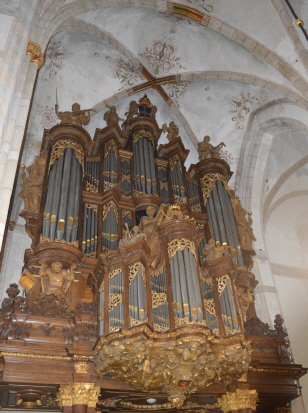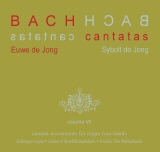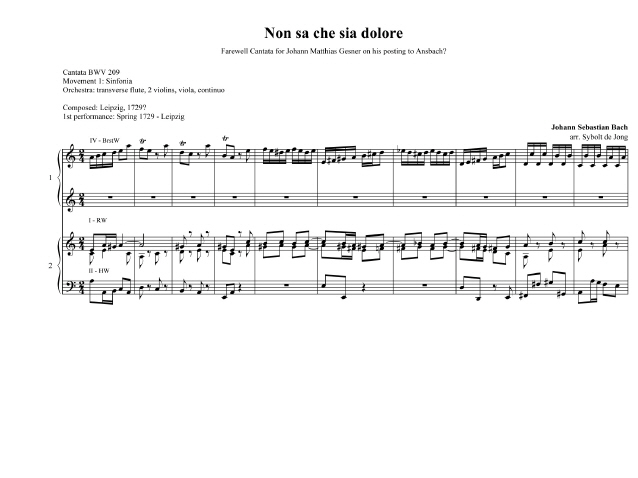BWV 209/1
Sinfonia Non sa che sia dolore - 1729 - Farewell Cantata for Johann Matthias Gesner on his posting to Ansbach.
The opening movement of the Italian cantata Non sa che sia dolore (BWV 209) is a composition in the ‘galant’ style and in da capo form. The authorship of the cantata is uncertain but the sinfonia is certainly by Bach. Its dialogue form exhibits similarities with the Concerto nach italienischem Gusto BWV 971 for harpsichord. The repeated fragment is especially characteristic, heard for the first time after 26 bars and persistently thereafter. Repeated figures can have many meanings in baroque music: pleasure, accentuation of an idea, boredom etc. As a result of the uncertain origins of the cantata, one must ask what Bach’s
rhetorical intentions were, but the music radiates optimism and joyfulness.
IV/P (C - c3)

|
Euwe & Sybolt de Jong Schnitger-organ - Grote of Sint Michaëlskerk Zwolle, The Netherlands BW: Fl 8, P 4, Rf 4, Spfl 3 OW: O 4, Hp 4 HW: O 8, Rfl 8 RW: Rf 8 |
| photo: Sybolt de Jong | recorded September 2008 - WestraMedia |
| player 1: medium / hard | player 2: hard |

Bach Cantatas volume VII > order cd
Euwe & Sybolt de Jong
Schnitger-organ - Grote of Sint Michaëlskerk
Zwolle, The Netherlands
| € 10,= | The arrangement (PDF) and invoice will be sent by mail. |

